Enjoy this article?
Most Museums Journal content is only available to members. Join the MA to get full access to the latest thinking and trends from across the sector, case studies and best practice advice.
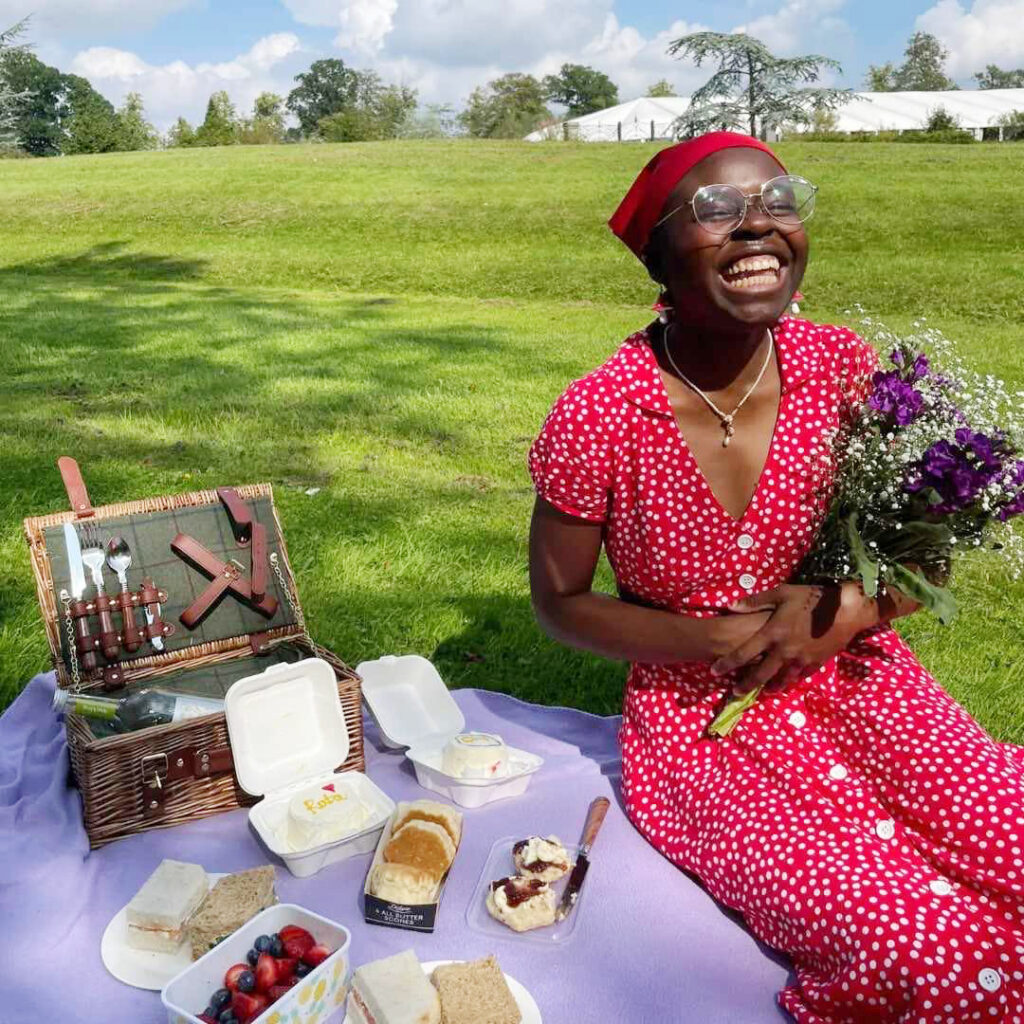
Ogechi, a young producer, spoke in a session about young people and their work with Tees Valley Museums
“Just a few weeks ago, my answer would have been Beamish, the Living Museum of the North in County Durham, for an immersive and interactive experience that transports you back in time. While Beamish is still a close second, my most joyous museum experience was a recent visit to Nottingham Castle Museum with my four-year-old niece.
Witnessing her excitement firsthand, I realised why I love history, art and culture so much. It is about preserving the stories and knowledge of the past, so that centuries from now, people will still be looking into that past for connection and discovery.
For me, that is what being a young producer is all about – striving to connect young people with stories across centuries, to remind them that at our core, we are not all that different from those who came before.”
Lisa is the museums, arts and heritage manager at Rotherham Borough Council. She spoke in a session about museums and the miners’ strike at the MA Conference
“In 2022, Rotherham hosted the Uefa Women’s European Championship. Our service started a project to mark the event with no prior knowledge of women’s football in the town, and no museum or archive collections relating to women’s football. For this, we created a large-scale temporary exhibition and accessioned 60 new objects into the collection. We worked with seven local women who generously shared their time, stories and objects. It was the first opportunity these women had had to share their story of overcoming challenges to play the game they loved so much. It was pure joy seeing them meeting friends they had not seen for so long and reminiscing about those days playing football in their youth. They were so thankful for the opportunity to share their story in such an important year for women’s football. It reminded me how important museums are for bringing communities together and empowering them to tell their story, often for the first time.”
Lee co-founded the Hip Hop Historian Society and King Monk Studios. He coordinated the Hip Hop History performance at the closing party at Leeds City Museum
“My most joyous experience at Leeds City Museum has been deeply intertwined with our decade-long collaboration and partnership with the museum, particularly through our annual event for Hip Hop History Month every November. Over the years, this event has grown remarkably, attracting between 1,500 and 3,000 participants each year.
These events have become a vibrant celebration of hip-hop culture, featuring workshops, live performances, Q&A sessions, wellbeing talks and awards ceremonies. It’s been a privilege to see the community come together so passionately. The pinnacle of this journey was undoubtedly the eight-month exhibition we held in 2023-24, A Hip Hop Journey: 50 Years of Kulture, which attracted 82,157 visitors. This exhibition was a monumental tribute to hip-hop’s rich history and influence, marking its 50th anniversary.
The most joyous moment came in April this year when we received the prestigious Museums & Heritage Award in the ‘under £80,000 travelling/temporary exhibition’ category, recognising our work on this exhibition. This award was a testament to the hard work, dedication and passion that went into curating and presenting this cultural celebration. It was a proud moment for all involved and a highlight of our ongoing partnership with Leeds City Museum.”
Sara, an audience development officer at Leeds Museums And Galleries, was on the conference social panel
“For me, the most joyous experiences are in the everyday. It’s when a visitor asks for directions to the loos and you see them an hour later, trail in hand, and they say: ‘I wasn’t planning on staying but this is so fun.’ It’s when a visitor assistant has a great interaction with someone and you hear the words: ‘I’m coming back – and bringing the kids.’
And it’s when I have the chance to visit somewhere else for ‘competitor analysis’ and come away thinking ‘we’re doing all right’ – yes, smugness is allowed occasionally. But joy is sometimes tricky to articulate; it comes in waves after the fact, and in reflection when you have packed so much in you hardly have time to think. More and more, it occurs when you know a museum is fighting for change, representation and inclusion. Joy, it seems, is actually rather complex.”
Esther is the community engagement manager at Leeds Museums and Galleries. She spoke in a session about building relationships with communities
“My most joyous museum experience involves people. I love the constant surprise of not knowing who I’ll meet, or whether they will say something that will completely throw me off my train of thought, my work for the day or even my career path. In 2023, Leeds City Museum’s 14- to 24-year-old volunteers (The Preservative Party) opened an exhibition called Overlooked [which highlighted untold Leeds stories including that of David Oluwale, who came to the city from Nigeria and drowned in 1969 after being harassed by the police].
During the launch, four of the group gave speeches about the process of curating such a traumatic exhibition, and one person performed a song they’d written. Their passion and bravery blew me away and reminded me of the way our audiences, volunteers, partners and critical friends can hold us to account and make us better at our jobs. It was like the young adults on that stage managed to articulate all my thoughts about the purpose of museums and make me understand myself better.”
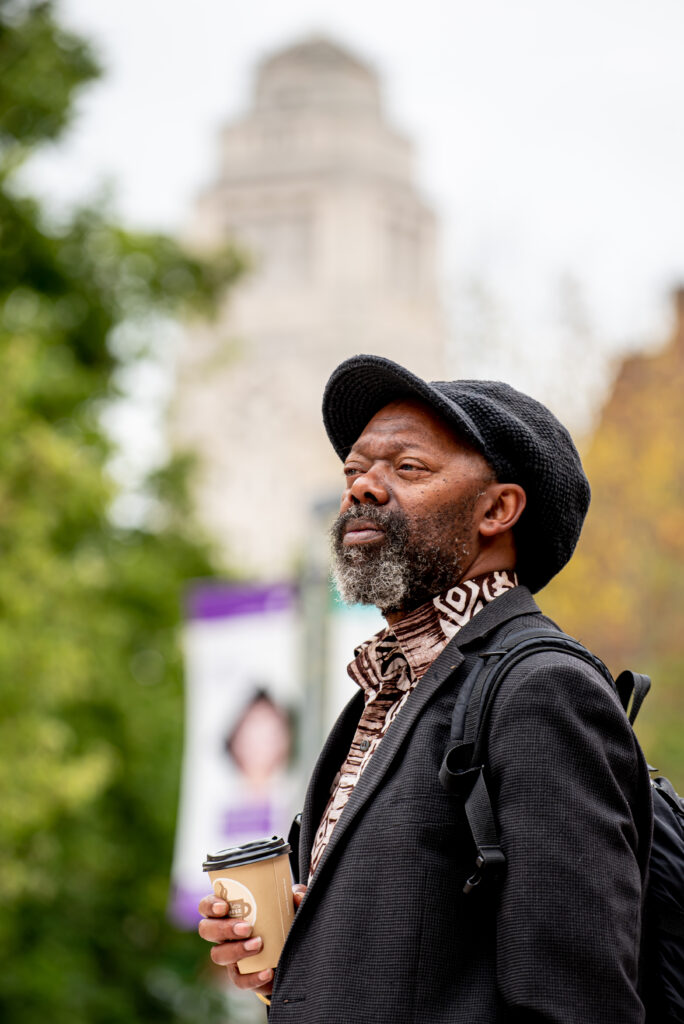
Joe is the director of Heritage Corner and founder-guide of the Leeds Black History Walk. He led the Hibiscus Rising walk tour at this year’s conference
“I visit museums wherever I travel, at home and abroad. My first experience was Leeds City Museum, as we lived just around the corner. I regularly visited the tired-looking, stuffed Bengali tiger and other natural-world exhibits. As an adult, I learned how ‘foreign’ content was acquired. When Leeds City Museum moved, I was consulted on inclusion and made a temporary contribution of a poster of my play, Runaway Diamonds, about the visit of the African American abolitionist lion, Frederick Douglass, to Leeds, in 1859.
Last year, I was thrilled to experience the 50th anniversary of hip-hop exhibition, a takeover of half of the top floor. A remarkable award-winning effort, with a replica of a graffitied New York subway train, alongside displays of recognisable memorabilia donated by local people. From the colonial displays of my youth to witnessing contemporary responses, Leeds Museums and Libraries has made innovative strides toward improving its telling of the story of Leeds, while also making visits relevant and less stuffy.”
Aya, a member of the Leeds Asylum Seekers’ Support Network, spoke in a session about Welcoming Migrants, a Leeds University Library Galleries community engagement project
“Our Leeds Asylum Seekers’ Support Network group made several visits to the art gallery at Leeds University. We saw a range of paintings; some were very abstract but the curator helped us to understand them. On one occasion, we did a walking tour in the grounds to see a few sculptures that we tried to draw, while on another, we did some weaving. Here in Leeds, I saw a different type of art – an art with deeper meaning.
In my country, Syria, the art is simpler – often pictures of a person or scenery. However, my most joyous experience at the gallery was when we made a recipe book called Cook Up. Each person wrote a recipe for a dish that was traditional in their country. One example is koshari, a dish that is more famous in Egypt than fish and chips is in Britain.
Some people made their food and brought it to the university, including shiro wot, a type of thick soup from Eritrea. The staff at the gallery gave us the opportunity to share and enjoy each other’s cultures. We would like to thank them for their time and effort.”
Ali is a heritage consultant and was a delegate at this year’s conference, which included a session on the work of Wilberforce House Museum
“For me, it’s robust, gritty and organic community co-production with minority groups and ‘hard-to-reach’ audiences (although maybe it’s museums that are hard to reach for audiences). This work involves deep listening, bold discussions and not being afraid to let go. The results can be inspirational, such as recent work at Wilberforce House Museum and the Wilberforce Institute at the University of Hull.
An initial collaboration with people of African-Caribbean descent led to a new permanent modern slavery gallery, co-produced temporary exhibitions tackling racism, and the development of an advisory board, with more exhibitions in preparation. It won multiple awards, including the Museums Association’s Museums Change Lives decolonisation category.
The real joy is seeing participants take the experience into developing their own projects and careers. I am in awe of their enthusiasm, courage and determination to share their heritage and end racism. Well-managed co-production can go a long way and build new museum communities.”
Vicky, a member of the MA’s conference social and tours panel, is the learning and outreach manager at Bradford District Museums and Galleries
“Watching families enjoy the activities and exhibitions I helped to shape and create in the museum always fills me with joy. As they explore the displays, engage with the interactive elements or tackle a new challenge together, I love to see their faces light up with excitement and wonder. It’s heartwarming to see children and their parents/carers bond over learning and discovery, sharing in the joy of exploring together.
I take pride in knowing that my work has the power to bring happiness and education to these families, and I love that I can work with my team to bring joy and creativity into everything we do. The laughter and chatter that fills a learning room or gallery as families interact with the exhibits is music to my ears – a confirmation that my efforts have made a positive impact and brought joy to others. Seeing the families leave with smiles on their faces and memories to cherish is just brilliant – I always imagine the chatter on the bus or in the car on the way home.
Knowing that I play a small part in creating those moments of joy and connection is incredibly rewarding. It’s the reason why I pop to events on a weekend and make time in the school holidays to step away from the emails and remember what a difference we can all make. It’s moments like these that remind me why I love what I do and inspire me to continue creating learning experiences that bring families together to spark curiosity, wonder and delight.
Joshua, an informal learning and engagement assistant at Leeds’ Thackray Museum of Medicine, led a tour of the institution
“Working in the learning team at the Thackray Museum of Medicine, I have seen the joyful impact of museums on people of all ages. I’ve seen joy on the face of young children as they take part in an under-fives session, just as I’ve seen it on the faces of adult visitors laughing during our Boffin’s history show.
Sometimes, an activity or show can make people smile in an unexpected way, and it is this ‘surprise joy’ that helps make museums so memorable and incredible. I keep snippets of feedback to remind myself of the positive power of museum learning, because museums can be places where joy lives.”
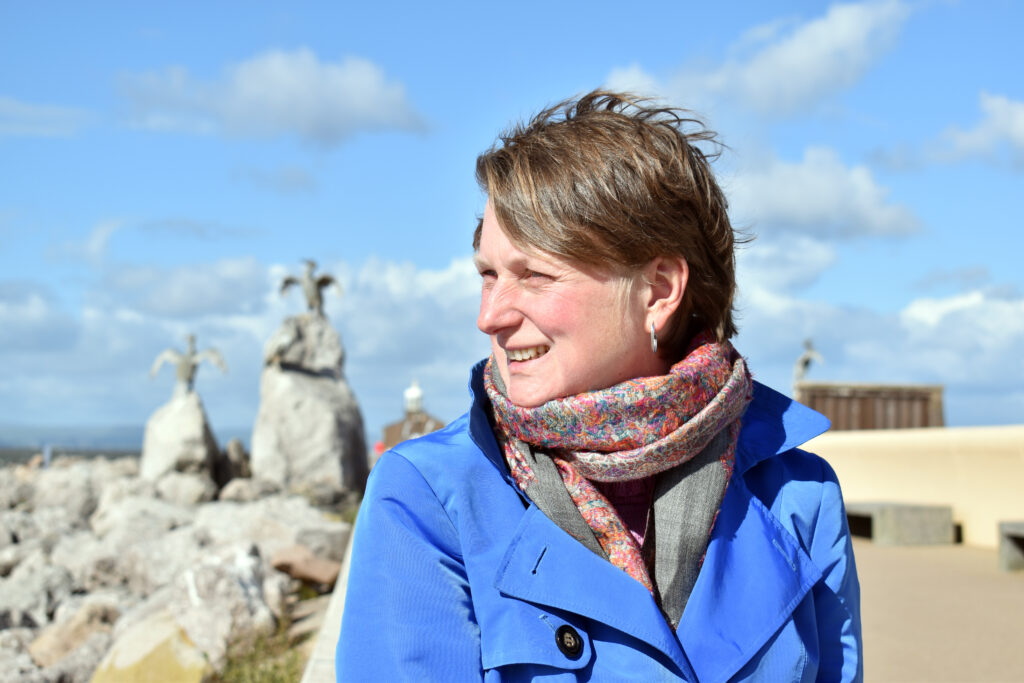
Miranda is a curator at Lancaster Arts, Lancaster University’s contemporary arts organisation and an Accredited museum. Her joyful career has included time spent working at Orleans House Gallery in Twickenham, the National Lottery Heritage Fund and the Fitzwilliam Museum, Cambridge. She was a delegate at this year’s conference
“I’m struggling to choose my most joyous museum experience. Is it the ‘wow’ moments? Is it experiencing them or helping to create them? I remember the first time I saw the lifesize blue whale in London’s Natural History Museum and just not quite believing that a creature could be that big.
As a museum professional, there are different kinds of joy. There is watching people who didn’t think the museum was ‘for them’ come to own it, or witnessing the museum become a place where people see their achievements celebrated.
Then there is dancing inappropriately with colleagues in a pub, fuelled by the knowledge that the funding bid angst was worth it because someone has just awarded you £1m. Maybe it’s telling that often the joy is also about relief and validation – here’s to a more joyful museum future for all of us.”
Hannah Fox is the executive director at the Bowes Museum, County Durham, and was a delegate at this year’s conference
“Since joining The Bowes Museum, the highlights have included seeing our famous silver swan move after restoration and witnessing the enjoyment of our young volunteers co-curating displays. [When I was at Derby Museums Trust] one standout moment during the Museum of Making development was creating the What If Machine, drawing inspiration from artist Heath Robinson and cartoonist Rube Goldberg.
The aim was to build an over-engineered chain reaction machine linked to the collection. During the London Olympics, teams of families, friends and businesses (including a museum team) spent time constructing sections of the machine to be triggered by the previous team and setting off the next, creating the overall machine.
Hundreds of visitors came to see whether it would work – it was a joyous experience of teamwork, community, creativity and fun. The event is still going strong 12 years later. Search for ‘What If Machine’ on Derby Museums’ YouTube channel to watch it yourself.”
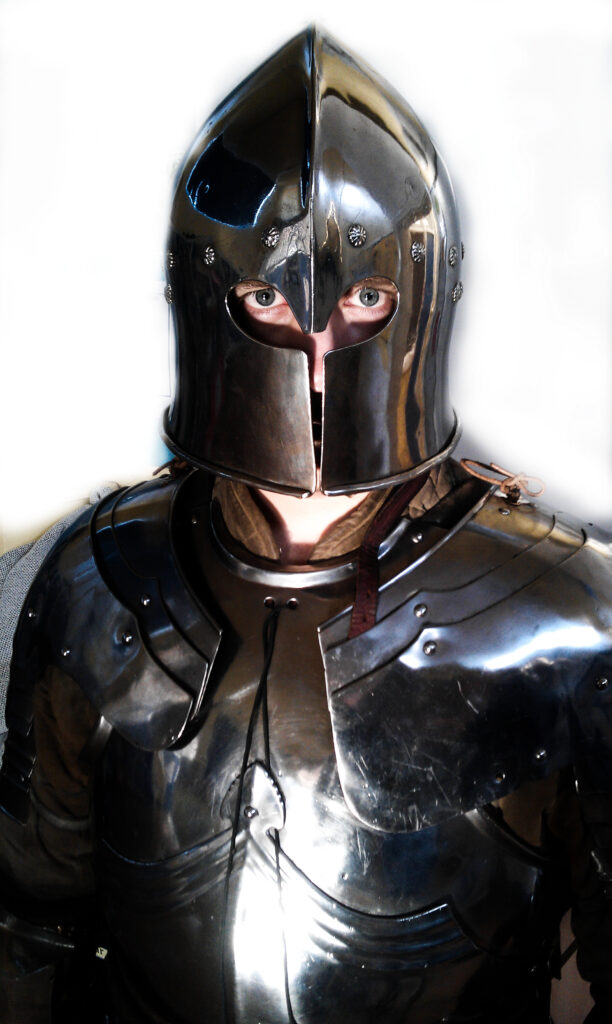
David is the director of Histrionics, a theatre company specialising in performance history
“Histrionics is a performance history company, staffed by actors and historical interpreters, that combines authenticity, drama and comedy to create interactive and immersive events, making the past a playground for all our audiences.
“The company has been going for 12 years, but before that I had worked in museum interpretation departments, either freelance or as a full-time employee, since 2003, so there are quite a lot of joyous moments to choose from.
“Being allowed to hold a 400-year-old samurai weapon, a sword that predates Christianity and the very telescope that the Duke of Wellington used at Waterloo are certainly memories near the top of the list.
“My role with Histrionics has been mostly performance related, so there are a good few joyous memories related to acting as well.
“Among many incredible moments are a 95th Rifles show; performing a Victorian policeman piece to an audience that had correctly guessed the murderer’s identity before the show was over and then came back to watch my two other policeman shows that followed this, just so they could guess correctly again; inserting jokes into a two-handed sword-fighting performance that were written in 15th-century Swabian, only to find, the first time we did it, that a group of German students in the crowd were studying medieval languages and knew exactly what we were saying; and taking part in a play set in the first world war created using letters written between a soldier and his wife, that we had the honour to perform to their descendants.
“Yet, I’d say that my most joyous museum experience is something that happened back in 2020, about eight weeks before the first lockdown. Myself and Rob Temple, my fight partner at Histrionics, were performing our ‘Iron Men’ show at the Royal Armouries in Leeds, which is the show we’re doing at the Museums Association conference on 12 November.
We wear full plate replica European armour from the late-15th century, enact a tournament duel and speak about the arms and armour from that period. It was an evening show for a client that had been in the museum all day; they had been given a tour and had been allowed to handle objects from the collection, before finishing their day by watching us. They were an incredible audience, very excited and extremely vocal, which we actively encourage in the show, but they seemed to have enthusiasm to spare.
“It was only after we had finished the performance element and started talking to the crowd, posing for photos and allowing people to hold swords, that we discovered the audience was a visiting group of professors and teachers from the Massachusetts Institute of Technology (MIT) in the US. They were not only fascinated with Histrionics’ arms and armour from a historical perspective, but they were also really interested in the science of its construction and how it works in relation to the human body.
“We ran massively over our time talking to them and they were late for dinner, but their excitement and enthusiasm seemed to shine new light on a subject with which we are so familiar – their insightful questions opened up fascinating discussions and also a new avenue of research for us.
To have been performing in museums for 17 years at that time, and suddenly to have the option to disseminate the maths and science of arms and armour, and to extend our research and add to our shows with a new scientific element thanks to MIT, was not an experience I had been expecting. But it will be one that I will always treasure.”
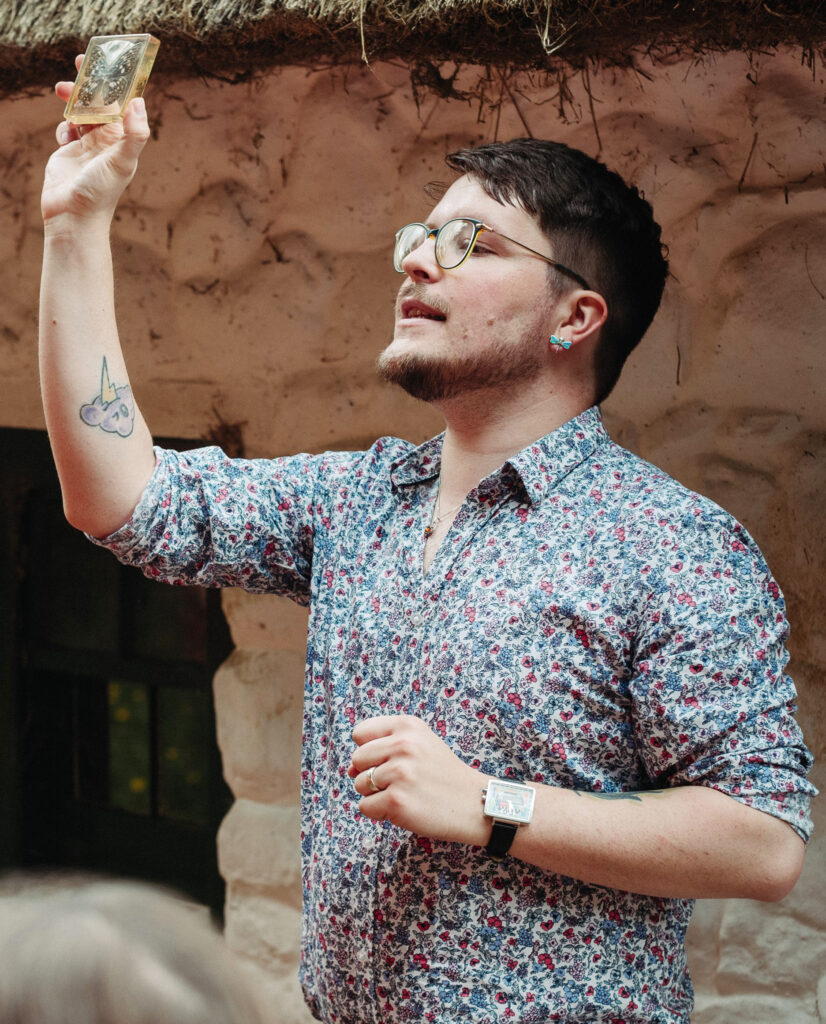
Nigel is the natural sciences education officer at National Museums Northern Ireland. He spoke at conference in a session about urban nature and museums
“I have had so many joyous museum experiences throughout my education, my career and as a visitor, but the one that stands out is when I was on a master’s placement at the Oxford University Museum of Natural History. I was carrying out conservation work on the earwig collection and in one of the drawers came across a specimen collected by Charles Darwin.
I have been fascinated by the natural world since I was a child and studied zoology at undergraduate level, so I was over the moon to know I was holding a piece of scientific history. Seeing his handwriting on that specimen label was the kind of surreal and joyous experience you can have only in a museum space. It is why I am so passionate about connecting the public with museum collections in my work – because I want them to share that joy.”
Most Museums Journal content is only available to members. Join the MA to get full access to the latest thinking and trends from across the sector, case studies and best practice advice.